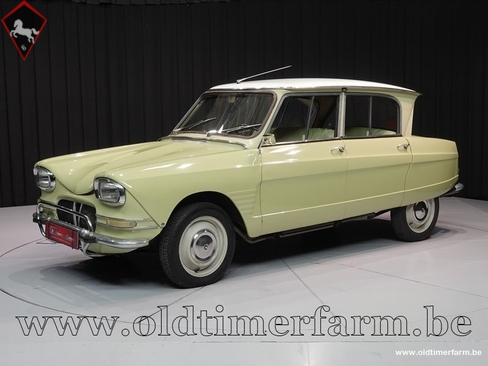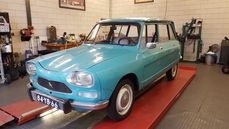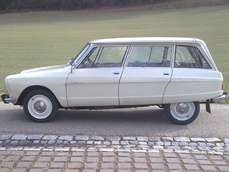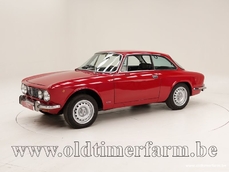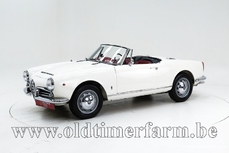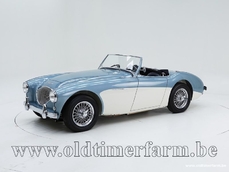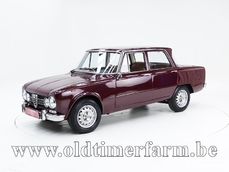Citroen Ami 6 '62 1962
General description :
Lowered price from span class="pq6dq46d tbxw36s4 knj5qynh kvgmc6g5 ditlmg2l oygrvhab nvdbi5me sf5mxxl7 gl3lb2sf hhz5lgdu">img src="https://static.xx.fbcdn.net/images/emoji.php/v9/t33/1/16/2705.png" alt="?" width="16" height="16" /> €11.950- €9.950 img src="https://static.xx.fbcdn.net/images/emoji.php/v9/t33/1/16/2705.png" alt="?" width="16" height="16" /> In 1937, Michelin, which recently bought Citroën, decided to launch a small car that would satisfy a new clientele, that of paid vacation (introduced in 1936), which would thus have the opportunity to travel at a lower cost. Note that Volkswagen had conceived the same idea in 1936 ... The specifications stipulated the following conditions: 4 seats, 50 kg of luggage, 3 speeds, no more than 3 liters per 100 kilometers, etc. We know the rest: serial production from 1948 to 1990, number of vehicles sold: more than five million. Between the popular 2 Chevaux and the Citroën Traction, then the DS, there was no mid-range vehicle. At the end of the 1950s, a new project was launched: the AM (M for mid-range). It is entrusted to Flaminio Bertoni, who had already worked on the Traction Avant and the DS. It was to be a vehicle with a maximum length of 4 meters, three volumes, the DS and 2 CV being two volumes. To keep as much space as possible in the trunk, and since the bosses did not want to increase the wheelbase of the 2 CV, Bertoni found an ingenious solution: invert the rear window, and thus offer more room to the rear passengers. This ingenious system was not a creation of Citroën: the Ford Anglia had already used this method in 1959, as well as large American sedans such as the Ford Mercury or certain Lincolns. The 435 cc engine fitted to the 2 Horses increased to 602 cc, to compensate for the weight gain. The Ami 6 met with great success, owing to greater comfort than its little sister while keeping its robust and reliable character. The Ami 6 was built in France but also in Forest, Belgium. In 1969, the AMI 6 gave way to AMI. Specifications Bodywork Length : cm/in: 396/156 Width : cm/in: 152/59.8 Height : cm/in: 148/58.5 Wheelbase : cm/in : 240/94.5 Weight: kg/lb : 660/1455 Mechanics. Displacement : flat-two 602 cc (38 cu in), front-mounted Valve gear : 4 Fuel system : 1 Solex carburetor Gearbox : 4-speed manual Driving wheels : front wheel drive Left-hand drive Maximum power : 25 hp at 4750 rpm Maximum torque : 40 Nm at 3000 rpm Maximum speed : 110 km/h (70 mph)
http://www.oldtimerfarm.be/en/collection-cars-for-sale/6566/citroen-ami-6-62.php
1962 Citroen Ami 6 '62 is listed sold on ClassicDigest in Aalter by Oldtimerfarm Dealer for €9950.
Car Facts
Car type : Car Make : Citroen Model : Ami Model Version : 6 '62 Engine size : 0.0 Model Year : 1962 Location : Aalter
Sold
Seller Information
Sold
People who viewed this Citroen Ami also viewed similar Citroen listed at ClassicDigest
Other cars listed for sale by this dealer
About Citroen
French industrialist André Citroën had been building arms for the French army during WWI by the end of the war he was left with great industrial facilities but no product for the post war market. In 1919 he founded Citroen that became the first mass-production car company outside the USA[3] and a pioneer of the modern marketing as well as factory backed services network. Mind you, even Eiffel Tower served as a billboard for Citroën from 1925 to 1934 -Mon Dieu, monsier!
Soon Citroën earned a reputation for innovation and revolutionary engineering. Staying true to their slogan "Créative Technologie" Citroën has many "firsts" under their belt:
Europe’s first all-steel-bodied car, the B10 In 1934.
The world's first mass-produced front-wheel drive car,Traction Avant, (also one of the first cars to feature a monocoque-type body)
The world's first hydropneumatic self-levelling suspension system, introduced with the revolutionary Citroën DS / ID models in 1955, as well as the first production car with disc brakes.
Swiveling headlights in 1967, and finally variable assist power steering in 1970
With Citroën purchasing Maserati in 1968 a door opened for a high speed GT-model that would compete with Ferrari, Aston Martin et. al, when introduced Citroen SM was the world's fastest fwd-car.
